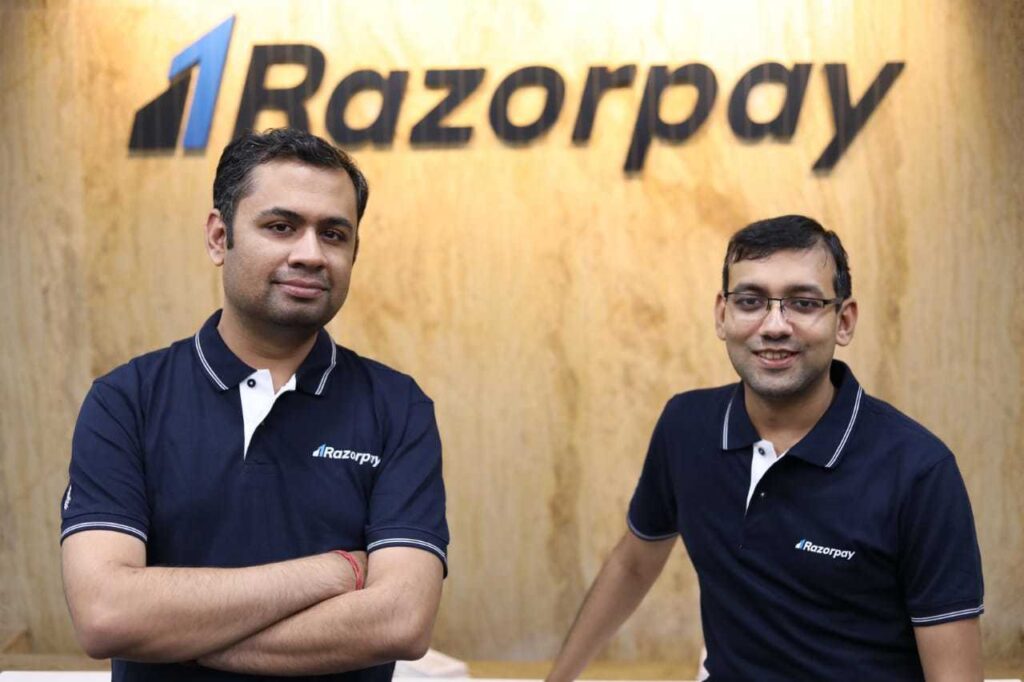Razorpay is India’s leading payment gateway that facilitates merchants in accepting digital payments.
Founded by Harshil Mathur, Shashank Kumar, and Harshil Parihari in 2014, the startup has raised $120 million in Series C funding led by Tiger Global Management with participation from Accel Partners, American Express Ventures and Y Combinator Continuity.
According to their data, their goal is to make fast, secure, and convenient digital payments accessible to every Indian who doesn’t have a credit card or debit card, which makes up for more than 1 billion consumers.
What is Razorpay?
Razorpay is an online payment gateway system in India that allows businesses to accept, process, and disburse payments. At the moment, they provide services to more than 18000 merchants and have data partnerships with over 150 banks for real-time settlements and seamless integration of their platform. They offer online credit and debit card processing as well as net banking solutions. Last but not least, they also provide mobile wallet tools on iOS and Android, allowing their clients to integrate wallets like Paytm into their website or application.
Their goal is simple: Make online payments easier than cash!
Razorpay has grown rapidly since its inception in 2015. Some say it’s because India loves simplicity. On the other hand, you could argue that it’s due to Razorpay experiencing a lot of hype in the digital payment space. Razorpay is a great alternative to Paypal and a competitor for companies like Paytm or even credit card providers like MasterCard or Visa.
Razorpay’s Mission
Razorpay’s vision is to enable more than 1 billion people in India to make fast, secure, and convenient digital payments.
Their goal is not to be a payment gateway exclusively for e-Commerce. Instead, they want to offer their services to all businesses in any industry. They also aim at becoming a global company by expanding into the US and Canada, which can potentially add millions of new customers overnight.
For this reason, Razorpay offers payment processing and provides tools that allow their clients to integrate wallets like Paytm into their own website or application. This way, they are adding additional value over other payment gateways that don’t facilitate wallets or, even worse, can’t add Paypal as a payment option anymore because of VISA policies.
How It All Started
Founders Harshil Mathur and Shashank Kumar met at IIT Roorkee, and together they started developing a mobile wallet app in March 2010. From the very beginning, their goal was to make mobile payments easier than cash.

Mathur had the idea that people would love to pay online if they could do it in a simple way. He wanted to save customers from their frustrations of entering card numbers or checking out on platforms like Paytm. This is how he envisioned something called Razorpay, an easy payment gateway for businesses. Kumar joined him on this journey with his expertise in setting up large enterprise scales companies at Microsoft and TCS.
As time went by, it became apparent that there was no mobile payment method in India that would be widely adopted anytime soon. So instead of building a solution for just one vertical, it made sense to create an alternative online payment gateway that could be used by businesses all over India.
The second version of Razorpay’s platform even received funding from Peter Thiel [PayPal co-founder]. For this reason, Razorpay joined the prestigious YCombinator incubator in 2015, where they were able to improve their product and scale their business.
Overcoming Challenges
At the beginning of 2015, Razorpay experienced a drop in their daily transactions because Paypal had stopped allowing Indian companies to process payments.
This move by PayPal was probably due to VISA’s policy that prohibits any company that doesn’t have a direct license from VISA/MasterCard to process subscription-based payments on behalf of third parties.
“For businesses, it was difficult to accept payments through credit cards because they were not allowed by Visa or MasterCard,” Mathur recalled that problem during an interview with TechCircle in February 2017. “So basically, that’s how we saw the opportunity.”
Since Razorpay didn’t own its payment gateway, they were forced to stop using it during this period. However, they were able to get in touch with RBL bank, which gave them their license for payment processing.
The Journey So Far
Razorpay is already profitable and just announced they raised $120 million in Series C funding, which puts the valuation at over $500 million, making Razorpay one of India’s highest valued fintech startups.
This funding round was led by Tiger Global Management with participation from Accel Partners, the startup’s first institutional investor. It also saw participation from Y Combinator Continuity, American Express Ventures and an unnamed existing backer.
Razorpay has customers like Big Basket, Indigo, Zomato & Swiggy and is planning to use this money to expand their product offering and grow into new markets such as the US and Canada, which is a logical next step for Razorpay.
Future Goals
Razorpay has announced it will use the new funding to expand its portfolio and build new features designed to meet the needs of small businesses and large enterprises.
Besides this, Razorpay also wants to expand into the US market, which is an ambitious goal. But not unrealistic for a company that had enough capital already to start its own incubator program in 2015.
To make it easy for companies worldwide, Razorpay offers multiple currency support with transactions being converted by Stripe or Paypal. The charges are always between 1% and 2%.
They do this by using something called the foreign exchange conversion optimization method (FX CO). Here’s an explanation of the technique by Razorpay CEO Harshil Mathur:
“If I’m taking a rupee amount from you, and if the dollar is 1.2 to a rupee, what we will do is that instead of giving you dollars, we will actually give you the equivalent amount in rupees which happens to be higher because 120 divided by 1.2 is equal to 100. So what this is doing is effectively allowing users to get more value per transaction.”
This strategy makes it easier for international merchants who are unfamiliar with the Indian market but still want to sell there.
Razorpay’s ultimate goal, however, has nothing to do with revenue or even market share at all. It is simply to become the default payment gateway in India for any business of any size.
Final Thoughts
Razorpay has come a long way since its inception in 2014. The company has become the most appealing option for western businesses that want to make money in India or even companies like Uber, which are looking for efficient payment options across Asia.
They are incredibly well-positioned to capture the rapidly growing Indian ecommerce market, which is still dominated by cash on delivery (COD) transactions even though almost half of India’s population has access to the internet via their mobile phones.





